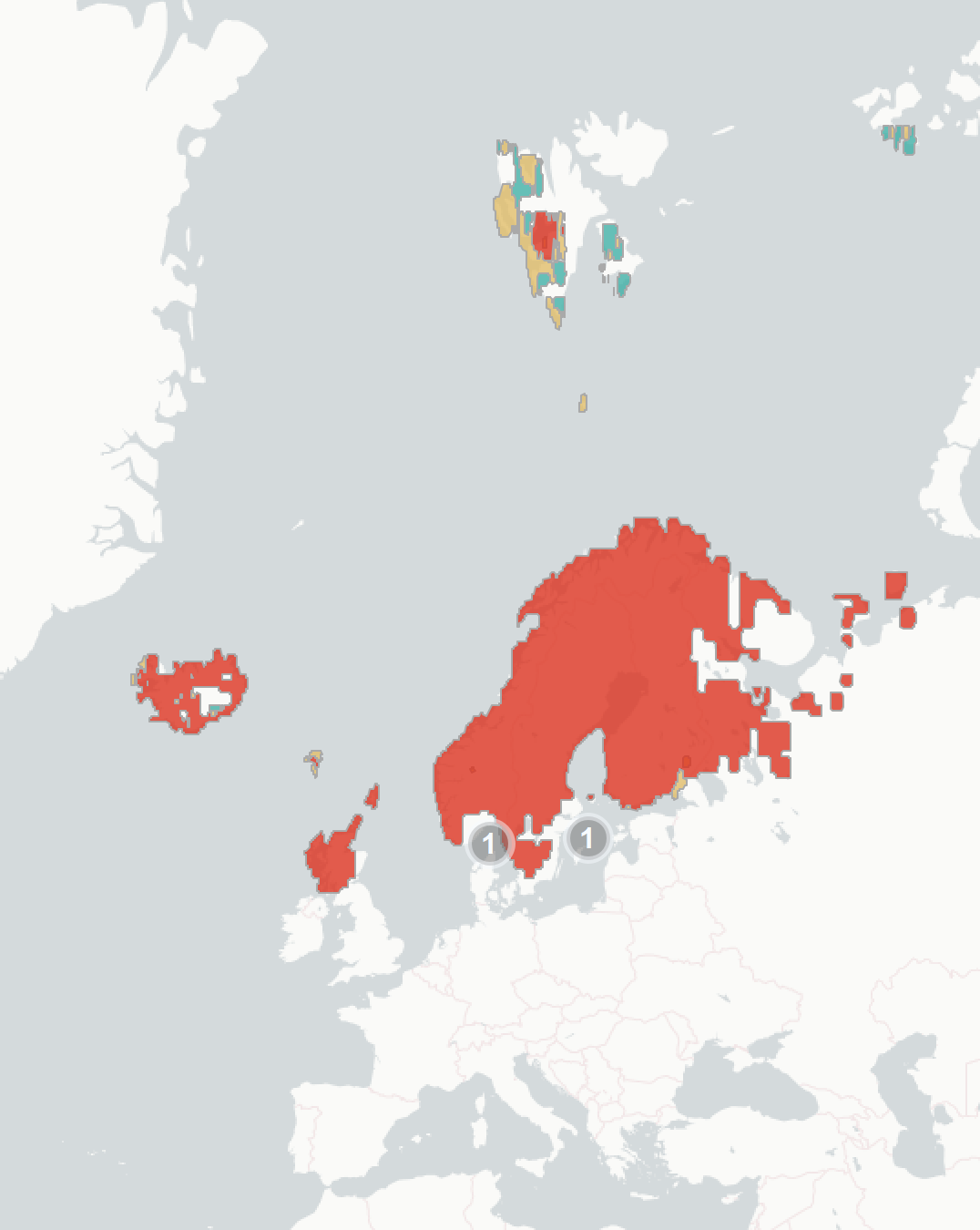Red-throated Loon (Gavia stellata): vulnerability to climate change
Evidence for exposure
Potential changes in breeding habitat suitability:
-
Current breeding area that is likely to become less suitable (93% of current range)
-
Current breeding area that is likely to remain suitable (4%)
-
Current breeding area that is likely to become more suitable (2%)
Current impacts to Red-throated Loons attributed to climate change:
-
No impacts have been documented for this species in Europe
Predicted changes in key prey species:
-
Key prey species are likely to decline in abundance along the south-western Swedish coast and the Baltic Sea
Climate change impacts outside of Europe
-
Climate warming in Arctic and sub-Arctic regions is reducing the area of suitable breeding habitat for red-throated loons. Warming increases lake depth in ice-bottomed lakes, increases the length of the ice-free season, and causes drainage of lakes, which are key loon breeding habitats.
-
In their wintering range in California, mass mortalities have been caused by “red tides”, mass growth of red algae. It is difficult to attribute one event to climate change, but red tides have become more common and more widespread in California and globally, which has been linked to the effects of climate change.
Sensitivity
-
Loons have a strong preference for breeding near nutrient-poor, very clear freshwater. Any increase in productivity of lakes driven by warming temperatures, especially algal growth, will likely impact many breeding sites.
-
Some populations of red-throated loons (particularly in Iceland) rely on small, shallow ponds for feeding and for nesting sites. In hot, dry summers these pools can dry up and result in difficulty in take-off, foraging and thermoregulation. Further hotter, drier summers caused by climate change could have significant impacts on these populations.
-
There is some evidence that loons’ survival rate is linked to changes in marine conditions, based on studies in the Pacific. Rapid climate change and changes in oceanographic patterns may therefore result in a significant drop in adult survival.
-
Red-throated loons are sensitive to disturbance, human activity (fishing, logging, agriculture, wind farms) can result in many nests being abandoned. Conservation intervention can therefore be difficult to carry out without disturbing nesting birds
-
Red-throated loons are also sensitive to predation, low overall breeding success rate is often due to heavy predation. Change in predator range or abundance due to climate change is likely to have significant impacts on loons.
-
Nests are sensitive to flooding following high rainfall or heavy storms. Any increase in extreme precipitation events could significantly impact breeding populations.
Adaptive capacity
-
Red-throated loons frequently return to the same breeding sites, and show some breeding site fidelity. However, when conditions change several populations have abandoned previous sites and colonised new areas. This suggests some populations may shift in response to changing climate
-
Red-throated loons have high fidelity to wintering sites, and they are unlikely to respond quickly to change in conditions in these wintering areas. Any major change to these areas may have significant impacts on wintering populations
-
Migration of red-throated loons often varies year to year in response to wind and weather conditions, though flexibility is likely to be limited due to complex interaciton of carry-over effects and role of staged migration. Loons may be able to change their migration strategy to some extent in response to climate change.
